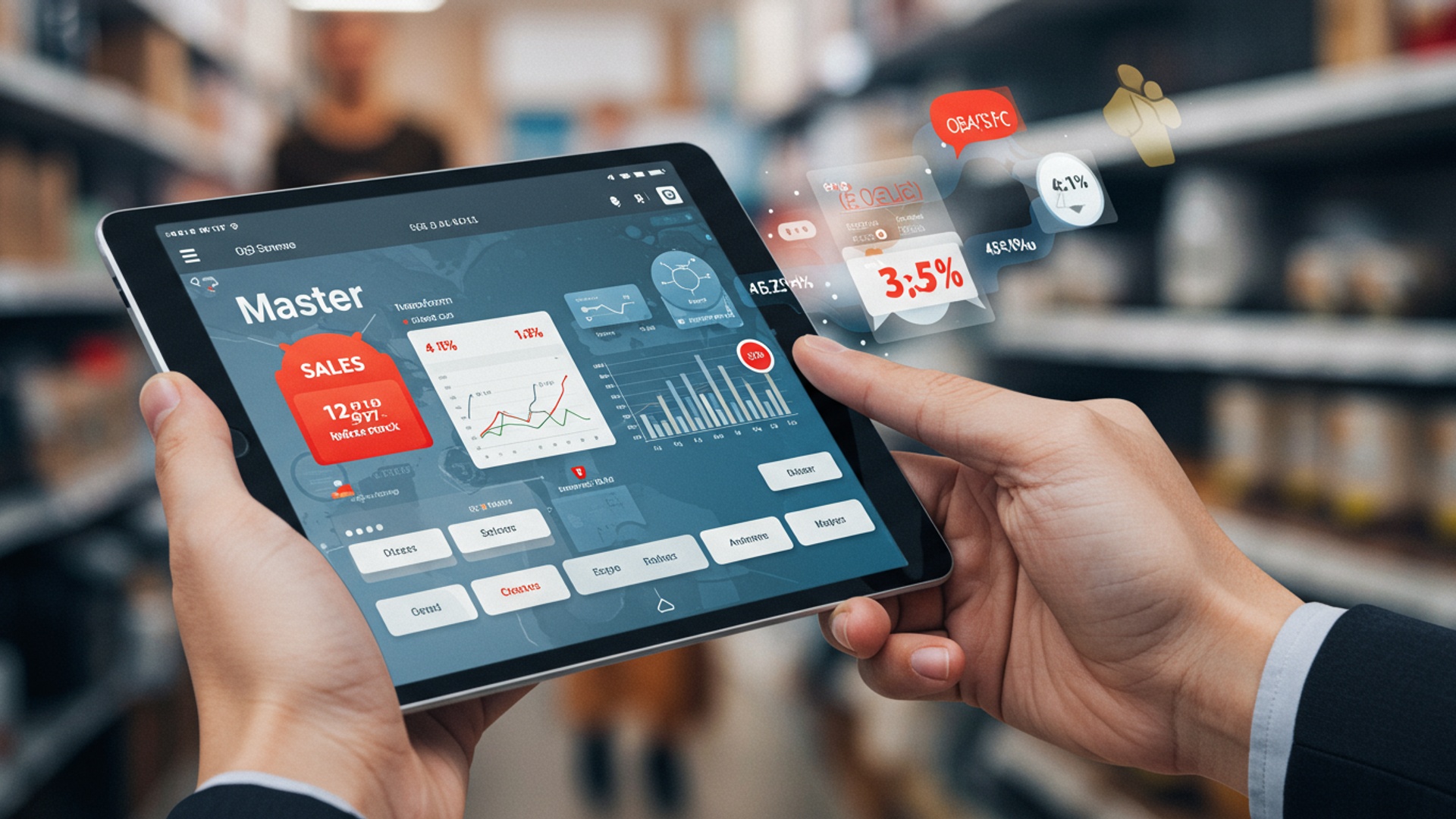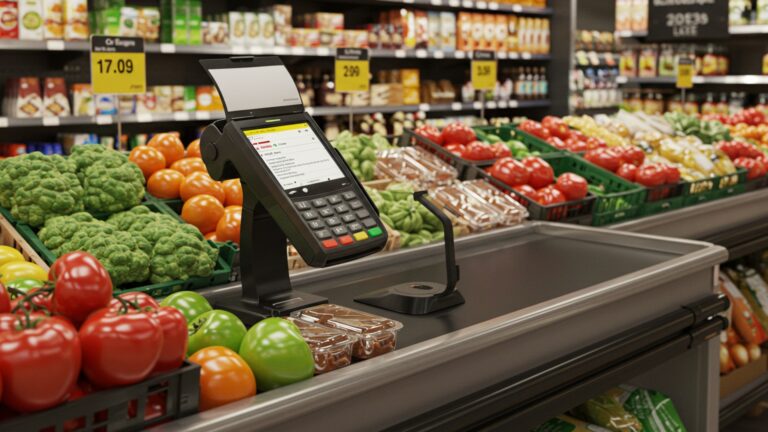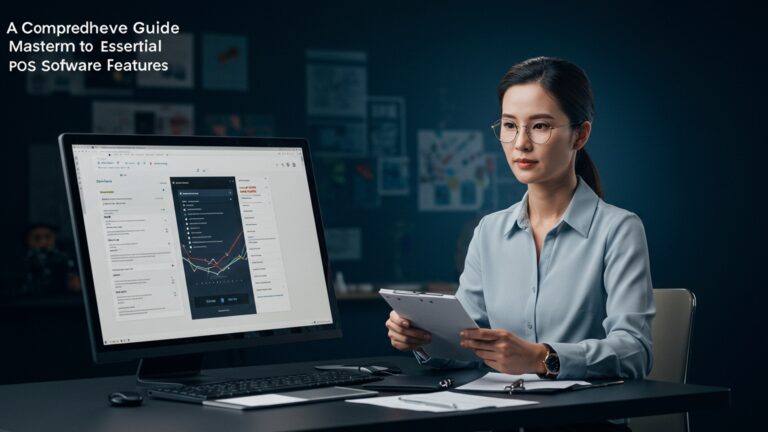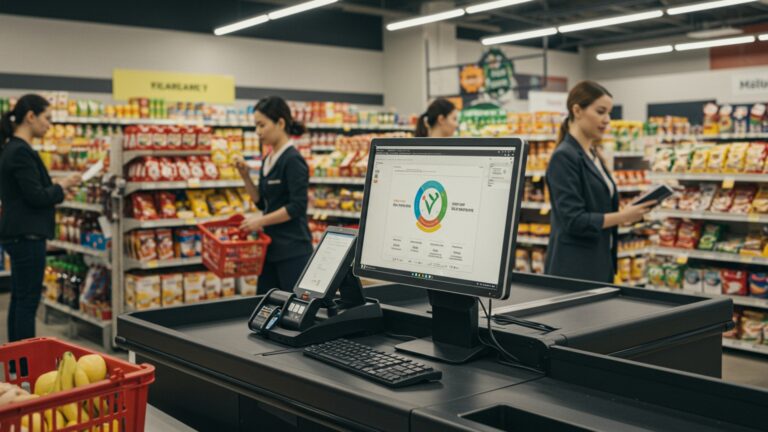Master Android POS Software How to Transform Your Mobile Device into a Sales Hub
The era of bulky, expensive point-of-sale systems is rapidly fading as mobile technology empowers businesses to operate with unprecedented agility. Your everyday Android device, far from being just a communication tool, holds the untapped potential to become a sophisticated sales hub. Cutting-edge android pos software now transforms smartphones and tablets into full-fledged transaction centers, seamlessly handling everything from inventory tracking and order management to secure, contactless payments via NFC, mirroring the sophistication of enterprise-grade systems. This innovation allows small cafes to process tableside orders and pop-up shops to manage sales effortlessly, leveraging cloud-based solutions for real-time data insights and an elevated customer experience, all while significantly reducing operational overhead.

Understanding the Evolution of Point-of-Sale (POS) Systems
For decades, the point-of-sale (POS) system has been the nerve center of retail and hospitality businesses. Initially, these systems were bulky, expensive. required dedicated hardware and complex installations. Think of the traditional cash register, evolving into clunky desktop computers with attached peripherals. While effective, these systems often presented significant barriers to entry for small businesses due to their upfront cost and maintenance complexity.
The digital age, But, ushered in a new era of innovation. The rise of smartphones and tablets, coupled with powerful mobile operating systems like Android, has democratized technology, making sophisticated tools accessible to everyone. This technological shift paved the way for the mobile POS – a paradigm shift that allows businesses to conduct transactions, manage inventory. track sales using devices they already own or can acquire affordably. This evolution is particularly significant with the advent of robust android pos software, transforming everyday mobile devices into potent sales hubs.
What is Android POS Software and Why It Matters
At its core, a Point-of-Sale (POS) system is where a customer makes a payment in exchange for goods or services. It’s the point where a retail transaction is completed. Traditionally, this involved a cash register. modern POS systems are far more comprehensive, handling everything from inventory tracking to customer management.
Android POS software refers to a specialized application designed to run on Android-powered devices, such as smartphones, tablets. dedicated Android POS terminals. This software transforms these mobile devices into fully functional, portable POS systems. It matters immensely because it offers unparalleled flexibility, cost-effectiveness. scalability, making advanced business management tools accessible to a wider range of businesses, from a bustling food truck to a sophisticated retail boutique.
Key advantages of leveraging android pos software include:
- Cost-Effectiveness: Eliminates the need for expensive, proprietary hardware. Businesses can often use their existing smartphones or tablets.
- Portability: Conduct sales anywhere – on the shop floor, at a market stall, or even curbside. This mobility enhances customer service and operational efficiency.
- Ease of Use: Android’s intuitive interface translates into user-friendly POS applications, reducing training time for staff.
- Scalability: Easily add more devices or features as your business grows without a massive infrastructure overhaul.
- Rich Ecosystem: Access to a vast array of Android apps and hardware peripherals that can integrate seamlessly.
To further illustrate the shift, let’s compare traditional POS systems with modern Android mobile POS solutions:
| Feature | Traditional POS Systems | Android Mobile POS Systems |
|---|---|---|
| Hardware | Dedicated, bulky, expensive terminals (desktop computer, monitor, specialized peripherals). | Smartphones, tablets, dedicated Android POS terminals. Leverages existing mobile devices. |
| Cost | High upfront hardware and software licensing costs, significant maintenance. | Lower upfront costs, often subscription-based software, uses affordable or existing hardware. |
| Portability | Fixed location, limited mobility. | Highly mobile, can process transactions anywhere with a network connection. |
| Setup & Installation | Complex, often requires IT professionals. | Simple app installation, often plug-and-play for peripherals. |
| Maintenance | Requires regular hardware and software updates, potentially costly. | Automatic app updates, less hardware maintenance due to modularity. |
| Scalability | Can be challenging and expensive to expand. | Easy to add new devices and users as the business grows. |
| User Experience | Often command-line or older GUI, can be less intuitive. | Modern, touch-friendly interfaces, often highly intuitive. |
Key Features to Look for in Robust Android POS Software
Not all android pos software is created equal. To truly transform your mobile device into an effective sales hub, the software must offer a comprehensive suite of features that address the diverse needs of modern businesses. Here are the critical functionalities to prioritize:
- Payment Processing:
- Support for various payment types: credit/debit cards (EMV chip, magnetic stripe), contactless payments (NFC like Google Pay, Apple Pay), cash. digital wallets.
- Integration with secure payment gateways and processors.
- Ability to process refunds, voids. partial payments.
- Inventory Management:
- Real-time tracking of product stock levels across multiple locations.
- Ability to add, edit. categorize products with variants (size, color).
- Low stock alerts and automated reordering suggestions.
- Barcode scanning for quick product lookup and inventory updates.
- Customer Relationship Management (CRM):
- Capture customer insights (name, email, purchase history).
- Loyalty program management (points, discounts, rewards).
- Targeted marketing capabilities based on purchase behavior.
- Sales Reporting & Analytics:
- Detailed sales reports by product, category, employee. time period.
- Access to key metrics like average transaction value, profit margins. peak sales hours.
- Customizable dashboards for quick insights into business performance.
- Cloud-based reporting for access from anywhere.
- Employee Management:
- Track employee sales performance and hours worked.
- Role-based permissions to control access to sensitive features.
- Time clock functionality for staff clock-in/out.
- Offline Mode:
- Crucial for maintaining operations during internet outages.
- Ability to process transactions and sync data once connectivity is restored.
- Integration Capabilities:
- Seamless integration with e-commerce platforms (e. g. , Shopify, WooCommerce).
- Compatibility with accounting software (e. g. , QuickBooks, Xero).
- API access for custom integrations.
- Customization:
- Ability to customize receipts with branding and messaging.
- Configurable product categories, taxes. discounts.
- User-friendly interface that can be tailored to specific business workflows.
Transforming Your Mobile Device: Hardware Components
While the android pos software is the brain, several hardware components act as its limbs, enabling a complete sales experience. The beauty of an Android POS setup is its modularity; you can choose only what you need. Here’s what you might connect to your Android device:
- The Mobile Device Itself:
- Your existing Android smartphone or tablet (running a recent version of Android for optimal performance and security).
- Dedicated Android POS terminals: These are purpose-built devices that combine a tablet, printer. often a card reader into one sleek unit, providing a more integrated, professional look.
- Card Readers:
- EMV Chip Readers: Essential for processing secure chip card transactions, often connecting via Bluetooth or USB-C.
- NFC (Contactless) Readers: For tap-to-pay options like Google Pay, Apple Pay. other contactless cards. Many modern card readers combine EMV and NFC capabilities.
- Magnetic Stripe Readers: Still used for older cards, though becoming less common.
- Receipt Printers:
- Bluetooth Printers: Compact and wireless, ideal for mobile setups or food trucks.
- Wi-Fi/Ethernet Printers: Suitable for more stationary setups where a stable network connection is available.
- Thermal printers are most common, requiring no ink.
- Barcode Scanners:
- Bluetooth Scanners: Handheld and wireless, perfect for inventory management and quick product lookups.
- USB Scanners: Can be connected via an OTG (On-The-Go) adapter to your Android device, often used in more stationary counter setups.
- Many Android POS apps also offer camera-based scanning using the device’s built-in camera, though dedicated scanners are faster and more reliable for high-volume use.
- Cash Drawers:
- Traditionally connected to a receipt printer, which then triggers the drawer to open after a cash transaction.
- Some modern drawers offer direct Bluetooth or USB connectivity.
- Stands and Docks:
- Tablets stands can transform a tablet into a fixed countertop POS, often with integrated charging.
- Docks can provide multiple USB ports for connecting various peripherals simultaneously.
Real-World Applications and Use Cases of Android POS Software
The versatility of android pos software makes it an invaluable tool across a diverse range of industries and business models. Its adaptability allows businesses to optimize operations, enhance customer experience. gain a competitive edge. Here are some compelling real-world applications:
- Small Retail Boutiques:
A clothing store owner, Sarah, uses her Android tablet with POS software. She can process sales anywhere in her store, check inventory on the fly. even take payments from customers waiting in line, reducing checkout times. During busy holiday seasons, she can quickly add a pop-up checkout station with just another tablet and a card reader.
- Food Trucks & Cafes:
Imagine a bustling food truck at a festival. The staff can take orders and payments directly at the window using a rugged Android tablet, sending orders wirelessly to a kitchen printer. This speeds up service, manages queues. provides accurate sales data for menu planning. For a small cafe, employees can take orders table-side, improving efficiency and customer satisfaction.
- Pop-up Shops & Market Stalls:
Entrepreneurs setting up temporary shops at craft fairs, farmers’ markets, or seasonal events benefit immensely. A smartphone with android pos software and a portable card reader is all they need to accept payments securely, track sales. manage their limited inventory without the need for a bulky setup or unreliable internet connections (thanks to offline mode).
- Field Service Businesses:
Plumbers, electricians, or HVAC technicians can use an Android tablet to generate invoices, process payments on-site. manage their service appointments. This eliminates manual paperwork, reduces billing errors. accelerates payment collection.
- Restaurants (Table-Side Ordering):
Waitstaff in full-service restaurants can use Android handheld devices to take orders directly at the table, send them instantly to the kitchen. even process payments right there. This improves order accuracy, reduces wait times. enhances the overall dining experience.
- Event Management:
For ticket sales, merchandise sales, or concession stands at concerts, sporting events, or conferences, Android POS systems offer rapid deployment and scalability. Event organizers can quickly set up multiple stations to handle high volumes of transactions efficiently.
In one instance, a local artisan who sold handmade jewelry at various craft markets struggled with cash-only transactions and manual record-keeping. After adopting an Android tablet with a popular android pos software solution and a small Bluetooth card reader, she saw an immediate increase in sales by being able to accept credit cards. Her inventory management became seamless. she could quickly examine which items sold best at which events, allowing her to optimize her product offerings and market strategy. This practical application underscores how easily and effectively a mobile device can be transformed into a powerful sales tool.
Implementing Your Android POS System: A Step-by-Step Guide
Implementing an Android POS system doesn’t have to be daunting. By following a structured approach, you can seamlessly integrate this powerful tool into your business operations. Here’s an actionable guide:
- Choose the Right Software:
- Research various android pos software options available in the market. Consider factors like your industry, business size, specific features required (e. g. , extensive inventory, advanced CRM), pricing model (subscription vs. one-time purchase). customer support. Popular choices include Square POS, Lightspeed, Clover. others, each with unique strengths.
- Many providers offer free trials; take advantage of these to test the software’s interface and features in a real-world scenario.
- Select Compatible Hardware:
- Determine if your existing Android smartphone or tablet is suitable. Check its operating system version and processing power to ensure smooth operation.
- Identify necessary peripherals: Do you need a card reader, receipt printer, barcode scanner, or cash drawer? Ensure these are compatible with your chosen android pos software and can connect to your device (Bluetooth, USB-C, Wi-Fi).
- Consider investing in rugged cases for mobile devices if they will be used in demanding environments.
- Set Up Inventory:
- Begin by entering all your products or services into the POS software. Include details like product names, descriptions, SKUs, prices, categories. current stock levels.
- If you have a large inventory, look for software that supports bulk imports via CSV files to save time.
- Assign barcodes to products if you plan to use a scanner.
- Configure Payment Gateway:
- Integrate your chosen payment processor with the android pos software. This usually involves linking your merchant account details within the app’s settings.
- Test a few small transactions to ensure that card payments are processed correctly and funds are settling into your account.
- Train Staff:
- Even with intuitive software, proper training is crucial. Conduct hands-on training sessions for all employees who will be using the POS system.
- Cover all aspects: processing sales, refunds, managing inventory, opening/closing shifts. troubleshooting common issues.
- Create a simple cheat sheet or quick reference guide for staff.
- Go Live and Monitor:
- Once everything is set up and tested, launch your new Android POS system.
- Closely monitor sales, inventory. transaction reports in the initial days and weeks. Address any issues promptly.
- Gather feedback from your staff and customers to make any necessary adjustments and optimize your workflow.
Security Considerations and Best Practices for Mobile POS
While the convenience of android pos software is undeniable, security must be a paramount concern. Handling sensitive customer data and financial transactions requires robust safeguards. Adhering to best practices will protect your business and your customers.
- Data Encryption:
- Ensure your chosen android pos software employs end-to-end encryption for all transaction data, both when at rest and in transit. This scrambles data, making it unreadable to unauthorized parties.
- Verify that the software provider is transparent about their security protocols.
- PCI DSS Compliance:
- The Payment Card Industry Data Security Standard (PCI DSS) is a set of security standards designed to ensure that all companies that process, store, or transmit credit card insights maintain a secure environment.
- Choose a POS provider that is PCI DSS compliant and helps you maintain your own compliance by securely handling card data.
- Strong Passwords and Biometrics:
- Implement strong, unique passwords for all POS accounts and devices. Change them regularly.
- Utilize biometric authentication (fingerprint, facial recognition) on Android devices for an added layer of security, especially for accessing sensitive POS functions.
- Regular Software Updates:
- Keep your Android operating system and the android pos software itself updated to the latest versions. Updates often include critical security patches that address newly discovered vulnerabilities.
- Enable automatic updates where possible.
- Secure Wi-Fi Networks:
- Always use a secure, password-protected Wi-Fi network for your POS operations. Avoid public or unsecured networks when processing transactions.
- Consider setting up a separate Wi-Fi network for your POS devices, distinct from guest Wi-Fi.
- Staff Training on Security:
- Educate your employees about security risks, such as phishing attempts and social engineering.
- Train them on proper handling of payment data, suspicious transaction identification. the importance of device security (e. g. , not leaving devices unattended).
- Device Management:
- Use device management tools that allow you to remotely wipe data from a lost or stolen Android POS device.
- Implement screen lock policies to automatically lock devices after a period of inactivity.
The Future of Retail: Integrating Android POS Software with Emerging Technologies
The journey of android pos software is far from over. As technology continues to evolve, so too will the capabilities of these mobile sales hubs. The future of retail lies in seamless integration and intelligent automation, with Android POS systems at the forefront of this transformation.
- AI and Machine Learning for Sales Predictions:
Future Android POS systems will leverage AI to examine sales data, customer behavior. even external factors like weather to predict demand for products. This will enable businesses to optimize inventory, reduce waste. make data-driven decisions on promotions and staffing.
- Enhanced Cloud Integration:
While current systems offer cloud capabilities, the future will see even deeper, more real-time integration across all business facets – from supply chain management to marketing automation. This creates a truly unified operational view, accessible from anywhere.
- Omnichannel Experience:
Android POS software will be central to delivering a seamless omnichannel experience, where online and in-store interactions are fluid and interconnected. Customers might browse online, pick up in-store, or return an online purchase at a physical location, with the POS system tracking every touchpoint.
- Advanced Contactless Payments and Biometrics:
Beyond current NFC payments, expect to see wider adoption of advanced biometric payment methods (e. g. , facial recognition, palm scans) integrated directly into POS terminals, offering even faster and more secure transaction experiences.
- Personalized Customer Experiences:
Leveraging AI and CRM data, Android POS systems will empower sales associates to offer highly personalized recommendations and promotions to customers based on their purchase history and preferences, directly at the point of sale.
- Integration with IoT Devices:
Imagine smart shelves that automatically update inventory in the POS system when an item is removed, or smart displays that change promotions based on customer proximity detected by the POS device. The Internet of Things (IoT) will further enhance automation and data collection at the retail front.
The continued innovation in android pos software promises a future where mobile devices are not just transaction points but intelligent assistants, capable of elevating every aspect of retail and service operations, making businesses more agile, efficient. customer-centric.
Conclusion
You’ve journeyed through the intricacies of transforming your Android mobile device into a potent sales hub, moving beyond traditional bulky systems. Now, it’s time to leverage this knowledge. My personal tip? Start by implementing a robust Android POS solution for your next pop-up market or mobile service, perhaps even trying it for a day at your main counter to observe how seamlessly it handles inventory, sales. digital receipts. This immediate application demonstrates the practical power of mobility, mirroring the efficiency of larger operations. This isn’t just about convenience; it’s about staying competitive in a world where mobile commerce and contactless payments are the undisputed norm. The ability to accept payments anywhere, from a bustling street fair to a client’s doorstep, directly reflects recent developments like “tap-to-pay” on phones, empowering even micro-businesses with enterprise-level professionalism. Embrace this mobile-first paradigm; your smartphone isn’t merely a communication device—it’s a powerful, portable business engine waiting to accelerate your growth. Take the leap and transform your operations today.
More Articles
Master Mobile POS Software Essential Guide for On-the-Go Business Operations
Unlock Business Growth with Android POS Software Your Complete Tutorial
Why Cloud Based POS Software is Your Business Future Learn How to Adopt It
How to Choose the Best Billing and POS Software for Your Business Needs
FAQs
What exactly does ‘transforming your mobile device into a sales hub’ mean?
It means using specialized Android POS (Point of Sale) software to turn your existing smartphone or tablet into a fully functional sales system. You can process transactions, manage inventory, track sales. even handle customer data, all from one portable device.
Do I need to buy a bunch of new hardware?
Not necessarily to get started! The core idea is to leverage your current Android mobile device. While you can certainly add peripherals like a barcode scanner, receipt printer, or cash drawer for a more robust setup, many businesses begin by using just their phone or tablet for sales processing.
Is this suitable for small businesses or just larger operations?
This solution is incredibly versatile and often ideal for small to medium-sized businesses, pop-up shops, food trucks, market vendors, mobile service providers. cafes. It offers a cost-effective and flexible way to manage sales without the need for expensive traditional POS systems.
How easy is it to set up and start using?
Most Android POS software is designed with user-friendliness in mind. Typically, you download the app, create an account, add your products. you’re ready to make sales. Many providers offer intuitive interfaces and guided setup processes to get you up and running quickly.
Can it handle inventory tracking and sales reports?
Absolutely! That’s one of its major benefits. Good Android POS software will keep track of your stock levels in real-time, alert you when items are low. generate detailed sales reports. These reports can help you grasp your best-selling products, peak sales times. overall business performance.
What kind of payment options can I accept?
Modern Android POS systems are usually integrated with various payment processors. This allows you to accept a wide range of payment types, including cash, credit and debit cards (often via a connected card reader). sometimes even mobile payment methods like Google Pay or Apple Pay.
Is my data secure when using this software?
Reputable Android POS solutions prioritize data security. They typically use strong encryption for transactions and store your business and customer data securely in the cloud. Always choose well-established software providers to ensure your data is protected.






